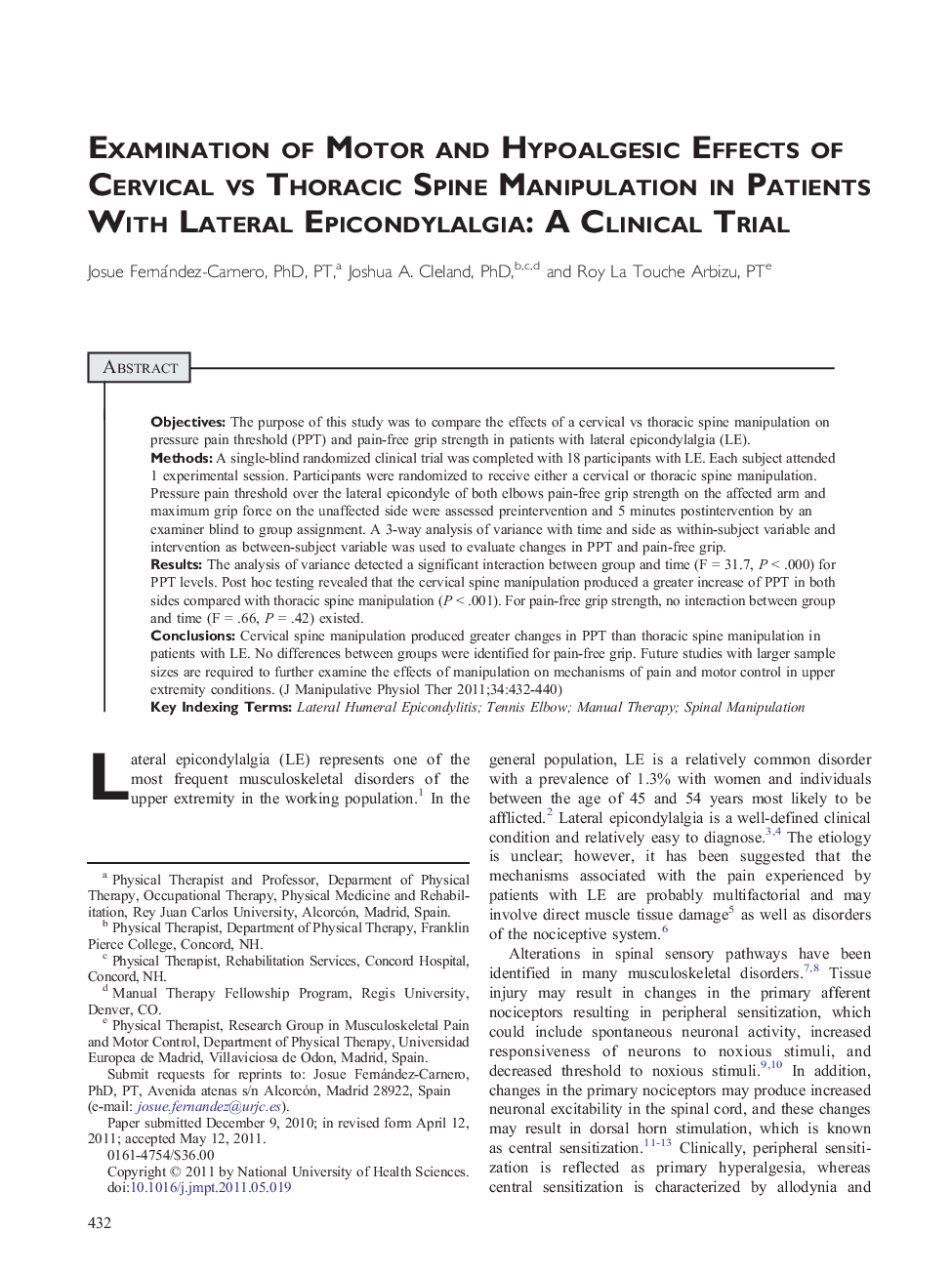| Article ID | Journal | Published Year | Pages | File Type |
|---|---|---|---|---|
| 2621004 | Journal of Manipulative and Physiological Therapeutics | 2011 | 9 Pages |
ObjectivesThe purpose of this study was to compare the effects of a cervical vs thoracic spine manipulation on pressure pain threshold (PPT) and pain-free grip strength in patients with lateral epicondylalgia (LE).MethodsA single-blind randomized clinical trial was completed with 18 participants with LE. Each subject attended 1 experimental session. Participants were randomized to receive either a cervical or thoracic spine manipulation. Pressure pain threshold over the lateral epicondyle of both elbows pain-free grip strength on the affected arm and maximum grip force on the unaffected side were assessed preintervention and 5 minutes postintervention by an examiner blind to group assignment. A 3-way analysis of variance with time and side as within-subject variable and intervention as between-subject variable was used to evaluate changes in PPT and pain-free grip.ResultsThe analysis of variance detected a significant interaction between group and time (F = 31.7, P < .000) for PPT levels. Post hoc testing revealed that the cervical spine manipulation produced a greater increase of PPT in both sides compared with thoracic spine manipulation (P < .001). For pain-free grip strength, no interaction between group and time (F = .66, P = .42) existed.ConclusionsCervical spine manipulation produced greater changes in PPT than thoracic spine manipulation in patients with LE. No differences between groups were identified for pain-free grip. Future studies with larger sample sizes are required to further examine the effects of manipulation on mechanisms of pain and motor control in upper extremity conditions.
